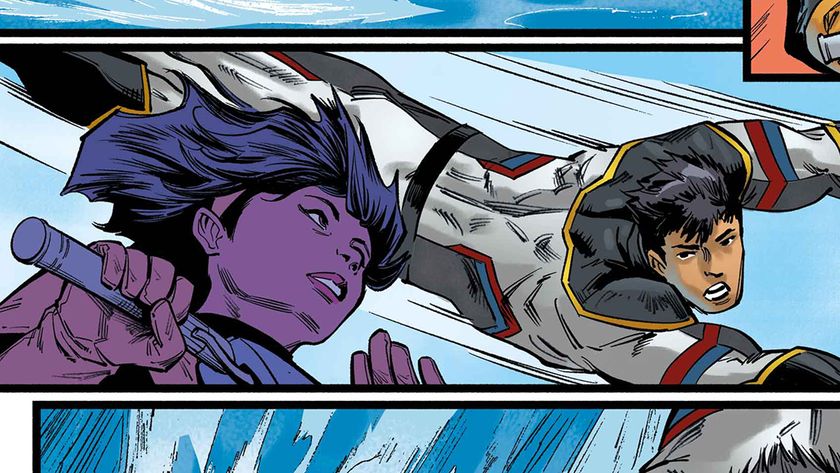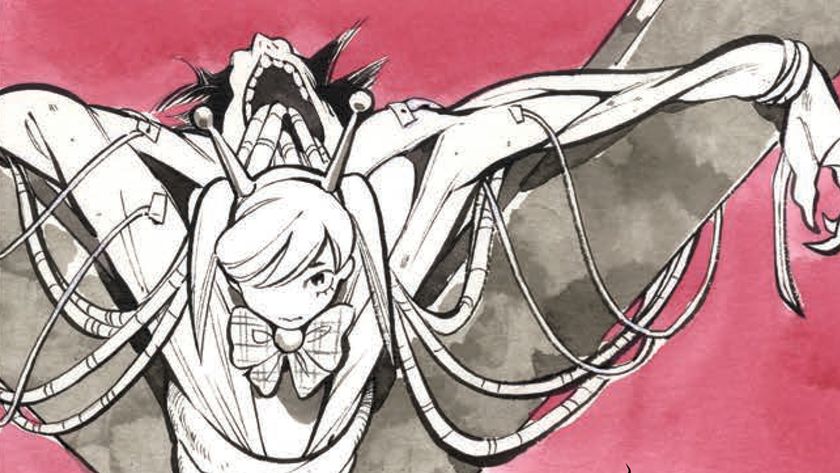Best Marvel Multiverse comic book stories
Marvel's Multiverse is becoming the narrative centerpiece of the MCU, and these comic book stories are the perfect primer if you're looking to explore
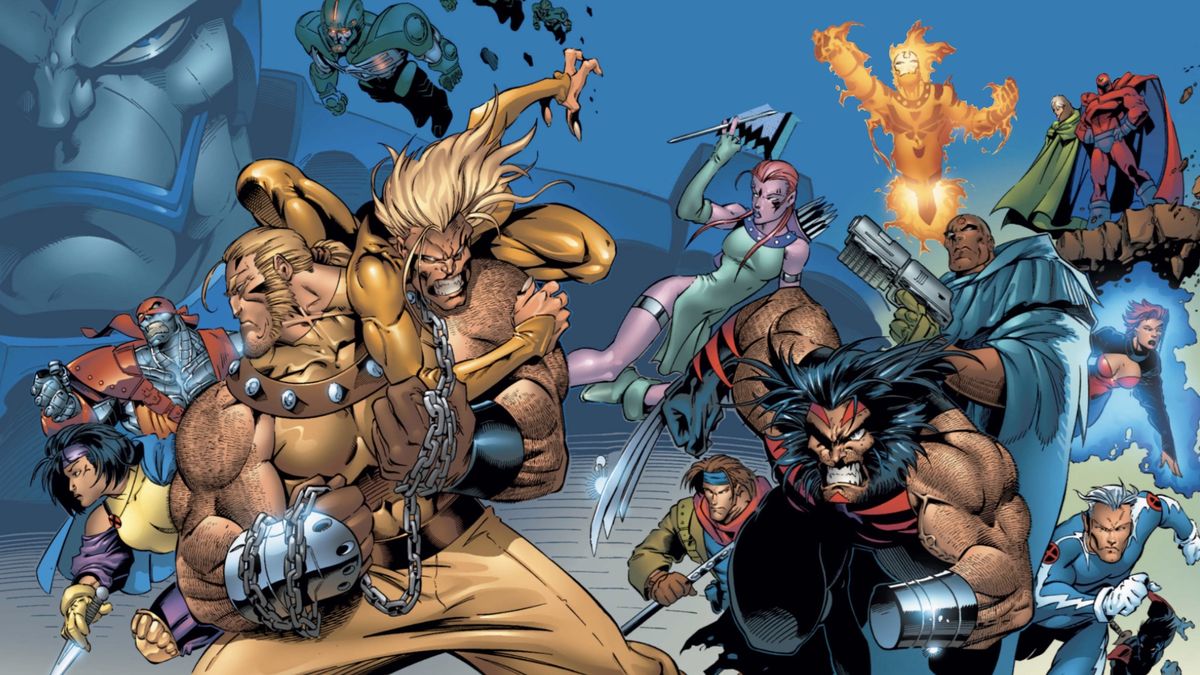
Marvel Multiverse stories are all the rage these days. Following the critical success of 2021's Loki and the box office domination of Spider-Man: No Way Home, Doctor Strange in the Multiverse of Madness looks to tie up loose ends from Marvel Studios' biggest foray into Multiversal waters yet.
It may be a relatively new phenomenon to see on film, but Marvel has never been a stranger to weird happenings across the Multiverse in comics. If you're looking for some stories to scratch that alternate reality itch and perhaps even see some of the stories that will inspire future MCU jaunts into the Multiverse, we've got a list for you.
15. Heroes Reborn (1996)
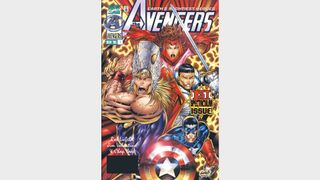
In the mid-'90s, characters including Thor, the Fantastic Four, Iron Man, Captain America, Doctor Doom, and more were thought to be dead after an epic battle with the reality-destroying villain known as Onslaught. The heroes were soon "reborn" in a different universe with slightly augmented backstories meant to update their origins for a newer audience - hence the 'Heroes Reborn' title.
A few of these properties were farmed out to creators who had left Marvel in the recent "Image Exodus." Jim Lee's Wildstorm Productions took over Iron Man and Fantastic Four, while Rob Liefeld's Extreme Studios took on the Avengers and Captain America. But the approach was a mixed bag. Many fans didn't like seeing the heroes' backstories changed, and Liefeld's contract was terminated early due to low sales.
After 13 issues of each series in this new universe, Marvel decided to bring an end to the initiative despite offering to continue it indefinitely if Jim Lee would draw at least one series. Unfortunately, he refused. It was revealed that the Heroes Reborn universe was a result of Franklin Richards creating a pocket dimension to save the heroes who were previously presumed dead. The Celestials took notice and allowed the pocket dimension to remain if Franklin would return the Marvel characters to their main reality, concluding the original 'Heroes Reborn' saga.
The title of the story was revived for a very different alt-reality tale in 2021 for the original event's 25th anniversary.
14. Wolverine: Old Man Logan (2008)

The original 'Old Man Logan' story is a great case for the elasticity of alternate reality stories. Fifty years into the future, evil has won and America has been split into a variety of city-states ruled by one Marvel villain or another. To pay off a debt he owes to the Hulk Gang, Wolverine takes a job from a now blind Hawkeye, and the two old men travel across America together in the old Spider-Mobile.
The result is a story that acts as a major 'What If...?' for the Marvel Universe. What would happen to it if the villains actually won and the heroes were subjugated? Writer Mark Millar imagines a bleak, Mad Max-esque reality now known as 'the Wasteland,' where the worst possible outcomes for popular Marvel heroes' powers and stories come to fruition.
Undoubtedly the story's biggest gut-punch is the reveal that Wolverine is partially responsible for the state of the world, having been tricked by Mysterio's illusions into slaughtering his fellow X-Men. The mission that Logan accompanies Hawkeye on is a hoax and results in the archer's death, as well as the deaths of Logan's own family. These are dark days.
Comic deals, prizes and latest news
Get the best comic news, insights, opinions, analysis and more!
But the story itself proved extremely popular. 2017's film Logan took some direct inspiration from the storyline for Hugh Jackman's last go-around as Wolverine. And Old Man Logan would find himself in the mainstream Marvel Universe for a time while the original core Wolverine was presumed dead.
Buy: Amazon
13. Exiles: Down the Rabbit Hole

Now here's a concept that seems primed for the MCU's next decade: Exiles.
The Exiles were assembled as a team specifically to address problems in the multiverse, similar to the role played by the TVA in Loki on Disney Plus - but with a little less bureaucracy.
The original team consisted of Blink and Morph from the 'Age of Apocalypse' reality, Nocturne (the daughter of Nightcrawler and Scarlet Witch), John Proudstar, and Mimic. Other characters would hop in and out of the lineup as the problems in their reality cropped up and were then subsequently solved, or, as was sometimes the case, they wound up dying during a mission.
'Down the Rabbit Hole' is the first arc of the book, and sees the wayward heroes brought together by the enigmatic Timebroker as the games begin. The subsequent run would go on to last 100 issues and lead to several later relaunches, but the first arc is a perfect proof of concept for the fun that can be had with the Marvel multiverse.
Buy: Amazon
12. X-Men: Battle of the Atom
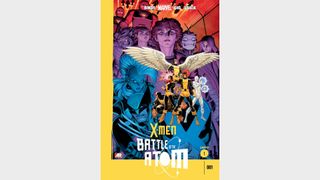
Time travel really makes the whole multiverse thing a lot more complicated. If characters end up meeting their future selves, there is always the potential that the meeting could fundamentally change the path they're on so that they never end up becoming exactly the person they meet. The X-Men are rife with this kind of thing, and 'Battle of the Atom' is a fun exploration of the varying relationships between a few different generations of characters.
The original 5 X-Men are in the present day due to Beast bringing them there to try to stop Cyclops from going down a more militaristic, revolutionary path. Beast's idea to appeal to Cyclops' old self goes awry, and the teen versions of the original X-Men - Cyclops, Beast, Iceman, Jean Grey, and Angel - are stuck in the present, unable to return to the past.
At the same time, the present-day X-Men have fractured into two factions, with mutants rallying behind Wolverine and Cyclops as two sides of a conflict over how mutants and humans should co-exist. The presence of the teen X-Men complicates this dynamic even further, and things are thrown far more awry when a team of future X-Men seem to arrive on the scene as well.
As is often the case with this kind of thing though, those aren't future X-Men. They're actually a future Brotherhood of Evil Mutants. But some actual future X-Men do eventually show up, and readers are treated to the O5 X-Men really having to reckon with the understanding that staying in this timeline will have consequences - good and bad - down the line. Multiverse/alternate timeline stories are great opportunities to force characters to be reflective about their existence and 'Battle of the Atom' definitely does a good job of doing that.
Buy: Amazon
11. X-Treme X-Men: Xavier Must Die!
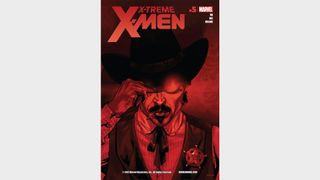
X-Treme X-Men represented another stab at the Exiles approach with a slightly more A-list cast. With the exception of Dazzler, the team is made up of alternate versions of characters we know. We've got a gay cowboy version of Wolverine, a kid Nightcrawler, Emmeline Frost of Earth-52012, and the disembodied head of Charles Xavier.
'Xavier Must Die!' sends the team on a mission to kill 10 evil 'Variants' of Charles Xavier, bringing them face to face with unicorns, trying to stay alive in a universe ruled by Storm and other superpowered god beings, and caught up in shootouts in a steampunk/Old West dimension.
Greg Pak isn't reinventing the wheel with this one, but it really shows how evergreen a Multiverse hopping approach to storytelling can be. There are almost infinite permutations of our favorite heroes and villains, and it's always fun to see new twists on them.
Buy: Amazon
10. Spider-Men
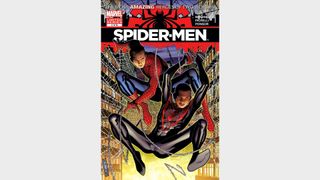
When the Ultimate Universe was first introduced, one of the big sticking points was that it would never crossover with the mainstream Earth-616 Marvel Universe. After all, the Ultimate Universe (Earth-1610) was supposed to be a fresh approach to characters that had been around for 40 plus years and provide a cleaner entry point for new readers who might be getting introduced to the X-Men and Spider-Man via the Bryan Singer and Sam Raimi films.
And for a while, that was the case... until it wasn't. Declining sales, despite the emergence of a new fan-favorite character in Miles Morales, meant that the rules were ultimately made just to be broken and Brian Michael Bendis was up to the task.
The plotting of Spider-Men is pretty straightforward - the core Marvel Universe Mysterio has a machine that can open a rift to the Ultimate Universe. Peter Parker ends up going through the rift, meeting Miles, and teaming up to get Peter home while Mysterio aims to keep Peter trapped in the Ultimate Universe forever.
The real meat of this story comes from Peter and Miles getting to hang out, as Miles wouldn't have been inspired to become Spider-Man without his universe's Peter Parker. So getting to learn a few things from the core Peter Parker is an exciting prospect that has continued since Miles was incorporated into the mainstream Earth-616 universe himself.
Buy: Amazon
9. Thor: Godbomb

Is 'Godbomb' the greatest Thor story of the last 20 years? One could certainly make that case. The main draw of the book might be Gorr the God Butcher and his quest to wipe out all the gods in existence, but Jason Aaron gets to have some fun with the Multiverse in this one as well.
To build his Godbomb, a weapon capable of wiping out all divine beings in an instant, Gorr travels throughout time and space to kill lesser gods, gain their power, and collect the components he needs. This leads to a team-up between three different versions of Thor - a young Thor who is not yet worthy enough to wield Mjolnir, the Avengers-era Thor that we are familiar with, and King Thor, an older future Thor ravaged by battle who has replaced one of his arms with the Destroyer armor and has all but lost Asgard.
By teaming up, they ostensibly are hoping to prevent King Thor's future from coming to pass for the modern-day Thor - but the presence of all three characters allows Aaron to explore what makes Thor who he is. What are the traits that remain a throughline between these three men?
'Godbomb' is a masterclass in that kind of reflection, especially as it relates back to Gorr as well.
Buy: Amazon
8. 1985
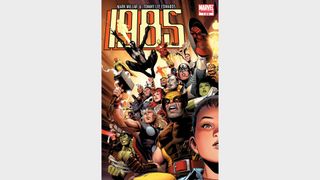
Toby Goodman was your average Marvel Comics-loving kid in 1985. He didn't have many friends, and would get bullied at school for liking comics - but he was catching up on Secret Wars. Toby was from a world just like ours... or so he thought.
One day while walking home from school he sees the Red Skull in the window of a house. Then he sees the Vulture on TV! Soon Marvel villains start appearing everywhere. Toby investigates the first house where he saw the Red Skull and finds a portal to the Marvel Universe. To save his world, he'll need the help of Earth's Mightiest Heroes. Because as it turns out, Toby's world is just like ours but with one small difference: it's home to a reality-warping mutant named Clyde Wyncham.
With the help of the heroes, Toby is able to return everything to normal - but his father is shot in a skirmish with Red Skull. With a quick flashforward, Toby is revealed to be the author behind 1985, and what's more, his father is safe under the care of his reality's Doctor Donald Blake and Nurse Jane Foster. A little imagination goes a long way to save someone's life.
1985 might be a little schmaltzy, but it's a fun love letter to everything that captured our imaginations when we read our first Marvel comic. Toby's reality would eventually be designated Earth-1219, and writer Mark Millar would continue using it as the world of his non-Marvel work such as Kick-Ass and Nemesis - making 1985 even more of a Multiverse tale than it seems at first glance.
Buy: Amazon
7. X-Men: Age of Apocalypse
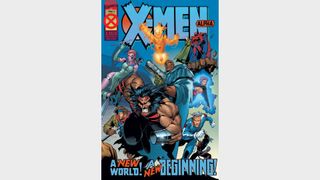
If you were an X-Men fan in the '90s, there was suddenly a month where it seemed like all the X-books you had been following just stopped and were replaced by weird versions of characters and concepts you knew and loved.
Some stuff didn't seem that crazy. Charles Xavier was dead? Sure, he does that every couple of years anyway. Magneto had a team of X-Men? Fine, he was headmaster for the New Mutants. Wolverine has one hand? That's weird but not as weird as the time he didn't have a nose. But wait...Cyclops and Havok work for Apocalypse and Mr. Sinister?! And who's this X-Man guy?
'Age of Apocalypse' really turned the world of X-Men on its head, and the only one who remembered the way things were supposed to be was Bishop, making him a really fun audience surrogate along the way. While this year-long 'What If...?' actually replaced the whole X-line for a time, it was eventually revealed to have taken place on Earth-295, a reality which has since been revisited a few times, possibly most successfully in Uncanny X-Force's 'Dark Angel Saga.'
But various characters from the Age of Apocalypse have jumped to the mainstream Marvel Earth-616 as well - notably the villainous Dark Beast and Sugar Man, and the heroic X-Man, who would go on to have his own ongoing title in the core Marvel Universe. The 'Age of Apocalypse' Sabretooth even became a part of the aforementioned Exiles team, and the 'AoA' Nightcrawler wound up joining Uncanny X-Force for a time after the 'Dark Angel Saga.'
Buy: Amazon
6. X-Men: Days of Future Past
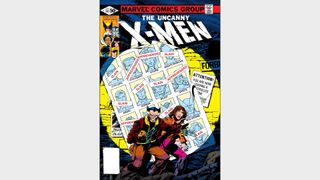
It might have a title cribbed from a Moody Blues album and a plot borrowed from an episode of Doctor Who, but 'Days of Future Past' is ground zero for a lot of how people think of alternate reality/multiversal stories in the modern Marvel Universe.
An adult Kate Pryde from the dystopian future of 2013 sends her mind back in time to the body of her younger self to get the X-Men to prevent Mystique's Brotherhood of Evil Mutants from killing Senator Robert Kelly, Moira MacTaggart, and Charles Xavier - an act which would set off a wave of violent anti-mutant sentiment and lead to the deaths of countless X-Men and other mutants. Meanwhile, readers are also treated to the horrors that Kate is trying to prevent in her time.
This story would eventually get its own Earth designation - Earth-811 - representing the year and month that it came out, January 1981. And this reality has had a lasting impact on the main Marvel Universe.
Notably, Rachel Summers was rehabilitated from her time as one of X-Men villain Ahab's mutant hounds after joining the core Marvel Universe X-Men, while Excalibur, another reality-hopping X-team, would visit Earth-811 twice. Readers have also been treated to a Hulk story and a Wolverine limited series that give some more context for the world of 'Days of Future Past'.
Though it seems that Kate's mission is a success and her dark future is averted in the mainstream Marvel Universe, the ending is still somewhat ambiguous. Did they actually prevent the dystopian reality of Earth-811, or did they merely delay it? That question hangs over the X-line forever, even informing aspects of the current 'Destiny of X' era, and that's the mark of a really great story.
Buy: Amazon
5. Earth X/Universe X/Paradise X
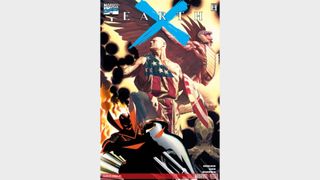
Wizard Magazine may be gone but its impact on the Marvel Universe, especially in the late '90s, cannot be overstated. In 1997, Wizard asked legendary artist Alex Ross to design a dystopian Marvel Universe. What he created ended up being the blueprint for the limited series Earth X. The issue sold out quickly, and Marvel ended up greenlighting the series and reprinting the designs as the Earth X sketchbook.
So what is Earth X? Explaining the plot is a little funny in 2022 because a good amount of the ideas introduced in Earth X ended up in the main Marvel Universe in some form or another. The original limited series and its two sequels are extremely dense, but the basic premise involves the Terrigen Mists (the substance which causes the development of superpowers in the beings known as Inhumans) sweeping across the Earth and causing untold mutations in almost everyone on the planet.
What follows is a rapidly expanding story that goes from Earth X to Universe X, to Paradise X on a Multiversal journey that explores concepts that have become front-and-center in the core Marvel Universe such as the involvment of the Celestials in Earth's development and the creation of superheroes.
There are dozens of alt-versions of Marvel heroes who play key roles in the Earth-X trilogy and an equal number of 'only in comics' type metaphysical concepts that make the stories something of a mind-melter. But with the continued introduction of story elements from Earth-X and its sequels into the mainstream Marvel Universe, especially with the upcoming AXE: Judgment Day event, Earth-X is quickly becoming one of the foundational texts of the Marvel Comics Multiverse.
Buy: Amazon
4. Excalibur: The Cross-Time Caper
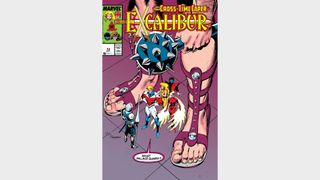
Excalibur is one of the most fun concepts to come out of the Chris Claremont era of X-Men.
While at Muir Island recovering from their injuries sustained during the 'Mutant Massacre' storyline, Kitty Pryde and Nightcrawler hear of the X-Men's supposed demise during 'Fall of the Mutants,' leading them to start a new team with Captain Britain, his girlfriend Meggan, a funky little robot head named Widget, and a recently time-displaced Rachel Summers from the 'Days of Future Past' reality.
While Excalibur has many dimension-hopping adventures, 'The Cross Time Caper' is one of their most famous exploits in the Multiverse. The team is in possession of a dragon-powered locomotive that they stole from their Nazi counterparts from Earth-597, the Lightning Force. In their attempts to get home, they end up getting into hijinks across many different realities.
There's one where Nightcrawler is essentially John Carter, Warlord of Mars, another that's a fairytale world where Kitty is put under a spell to act like a princess and marry a prince, one that's a riff on Judge Dredd, and more.
Chris Claremont has never been shy about wearing his influences and interests on his sleeve, and Excalibur is another great example of how he gets to explore his roots within the context of a Marvel Comics story.
Buy: Amazon
3. Alan Moore's Captain Britain
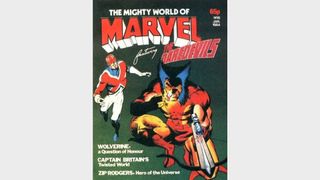
Not unlike DC's Crisis on Infinite Earths, Alan Moore's run on Captain Britain ramps into the death of a parallel world which we eventually find out that it has the designation Earth-238. This is where the designation of Earth-616 would seem to have been invented - although, who should get the credit has been up for debate.
But Moore isn't content to limit his story to primarily Marvel characters. Readers are treated to references to Moore's Doctor Who run, and he references Marvelman/Miracleman as well. This isn't just the multiverse - this is the Omniverse.
An alternate version of Captain Britain named Captain UK shows up and warns that politician James Jaspers is spouting the same kind of rhetoric on Captain Britain's Earth that will lead to genocide in her reality. Meanwhile, a dimension-hopping cyborg called the Fury is approaching to destroy Earth-616's heroes! There's a big fight, but it's seemingly too late - Jaspers has started to unravel all of reality.
In a lot of ways, this is typical Multiverse/alternate timeline/alternate dimension type stuff. But it's also ground zero for so many ideas we would see other writers play with later on. There's a reason that Alan Moore is widely considered among the greatest comic writers of all time, and if this was a list of how influential a story could be beyond its humble origins, this might be number one.
The story's climax sees Captain Britain not just traveling through a shattered reality, but traveling through comic book pages and panels before turning the Fury on Jaspers. The Fury takes out Jaspers, Captain UK kills the Fury, and there is ostensibly a happy ending. The heroes have won the day, and Alan Moore has created a blueprint for so many comics to come.
Buy: Amazon
2. Spider-Verse
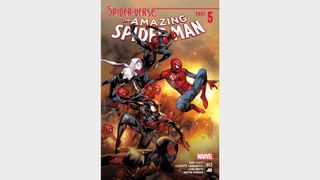
The times they have a-changed! It used to be that when comic book fans talked about comic book plots and different versions of characters and their deaths and rebirths, the layman rolled their eyes back in their head and said something to the effect of "that's why I can't read comics." But now the concept of a Multiverse is something everyone can wrap their heads around. Many attribute that to 2018's Spider-Man: Into the Spider-Verse animated film, but that movie has its roots in the 2014-2015 Spider-Verse comic event.
The plot centers around a group of villains known as The Inheritors, who travel across the Multiverse to devour the Spider-Totems of each world - meaning the heroes of each reality who share Peter Parker's spider-powers and role as Spider-Man or equivalent heroes.
The Inheritors claim more than a few casualties along the way, including Golden Spongecake Spider-Man, Spider-Man 1602, House of M Spider-Man, Old Man Spider, and more. This leads to the formation of a Spider-Army across the multiverse which includes Spider-UK, Animated Series Spider-Man, Spider-Gwen, Miles Morales, and many, many more who team up and head to the Inheritors' home, Loomworld/Earth-001, to defeat their adversaries in their home turf.
The heroes win the day (because this is a Big Two superhero comic after all), but Dan Slott's Spider-Verse story takes such a maximalist approach to multiversal storytelling that it is kind of impossible to ignore. There is, almost literally, a Spider-Man for anyone and everyone in this story even if the ol' Webslinger wasn't one of your favorite characters to begin with.
The Inheritors wouldn't lay dormant for long, returning in this Spider-Verse's sequel, Spider-Geddon, and the larger impact of Spider-Verse can be felt across superhero media today, as typified in the recent MCU blockbuster Spider-Man: No Way Home.
Buy: Amazon
1. Secret Wars (2015)

If there is one story to rule them all, it must be 2015's Secret Wars.
Jonathan Hickman is no stranger to playing with multiverse and time travel elements in his work, and his revival of the title of the very first full-on Marvel crossover event represents the culmination of his work on the Fantastic Four - as well as a soft reboot for the entirety of the Marvel Universe. As a result, Secret Wars has direct connections to just about every single story on this list.
In 2015's Secret Wars, the realities of Marvel's Multiverse are colliding and destroying each other in events known as 'Incursions' thanks to the metaphysical machinations of a race of omnipotent aliens known as the Beyonders, who have connections to the villain of the original Marvel Super-Heroes Secret Wars story.
None other than Doctor Doom is able to use his unique combination of scientific and magical knowledge along with the borrowed reality-warping power of the Molecule Man to save Marvel's Multiverse, and what's left becomes an amalgamation of scraps of the different realities Doom managed to hold together known as 'Battleworld' where Doom himself reigns supreme over numerous 'Variant' versions of well-known Marvel heroes.
In the end, Doom's power over Battleworld - and therefore the larger Marvel Multiverse - comes down to a conflict between Doom and his old arch-enemy Reed Richards, who eventually defeats the Latverian despot with the help of a group of mainstream Marvel heroes who were spared the effects of Doom's control.
The ramifications of Secret Wars may be the biggest waves ever to hit the Marvel Universe in a single story, with Miles Morales and several other Ultimate Universe characters crossing over into mainstream Marvel continuity, and Reed Richards and his family electing to remain in a pocket dimension to rebuild the Multiverse, leaving Marvel without a Fantastic Four for several years.
If you're looking for an Avengers: Endgame-style comic book story that brings together just about all of Marvel history, this is it. ‘Nuff said.
Buy: Amazon
Pierce Lydon has been a contributor to Newsarama for over 10 years, writing everything from reviews to deep dive explainers, to interview pieces and best lists.
